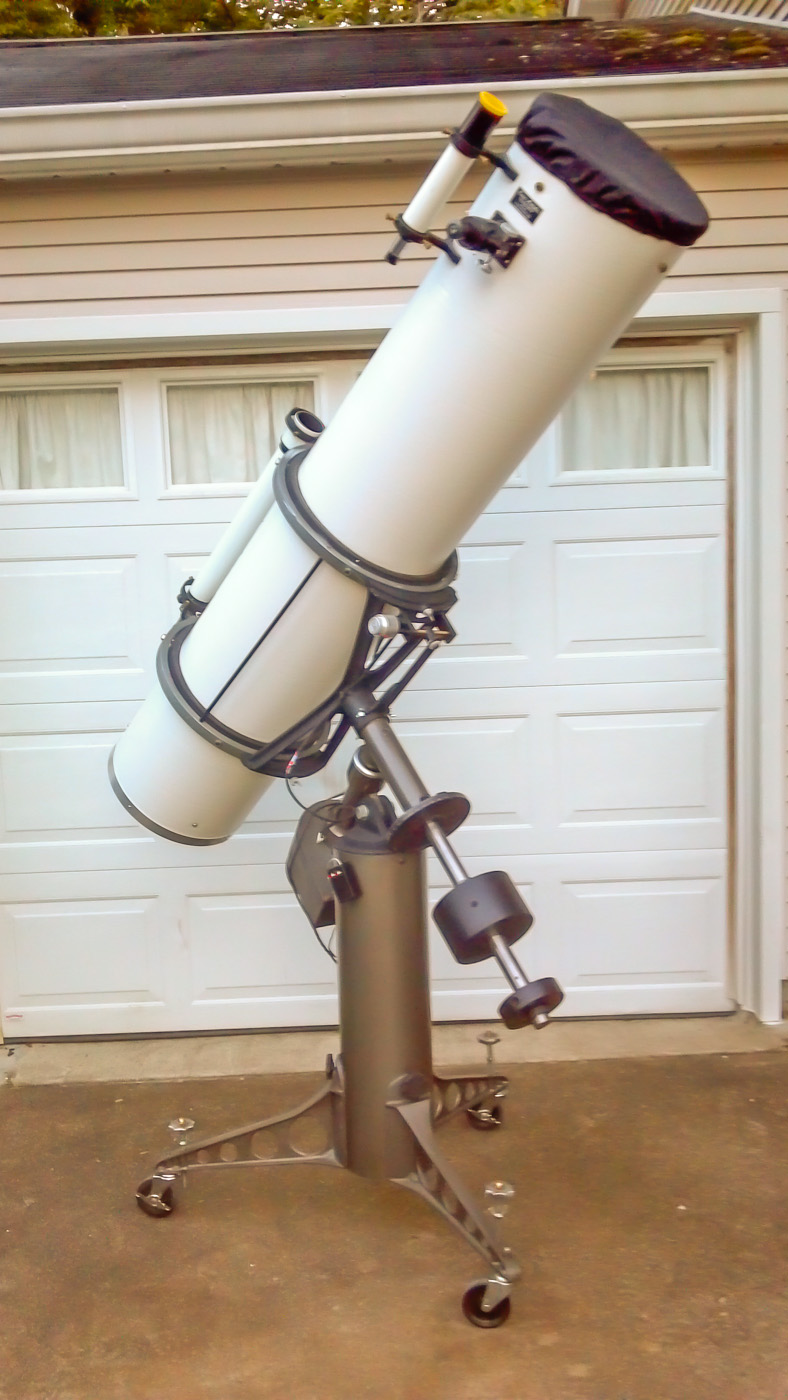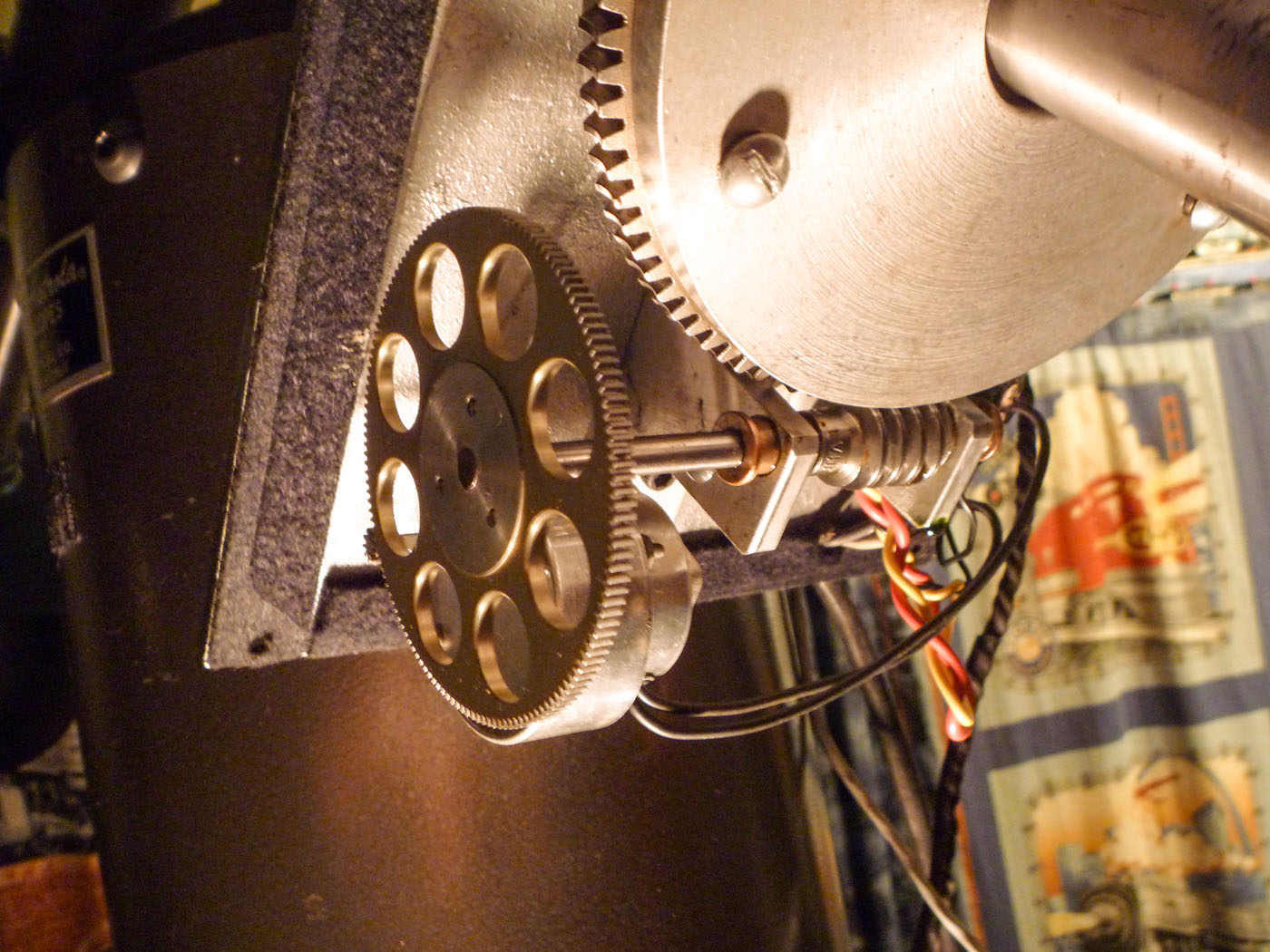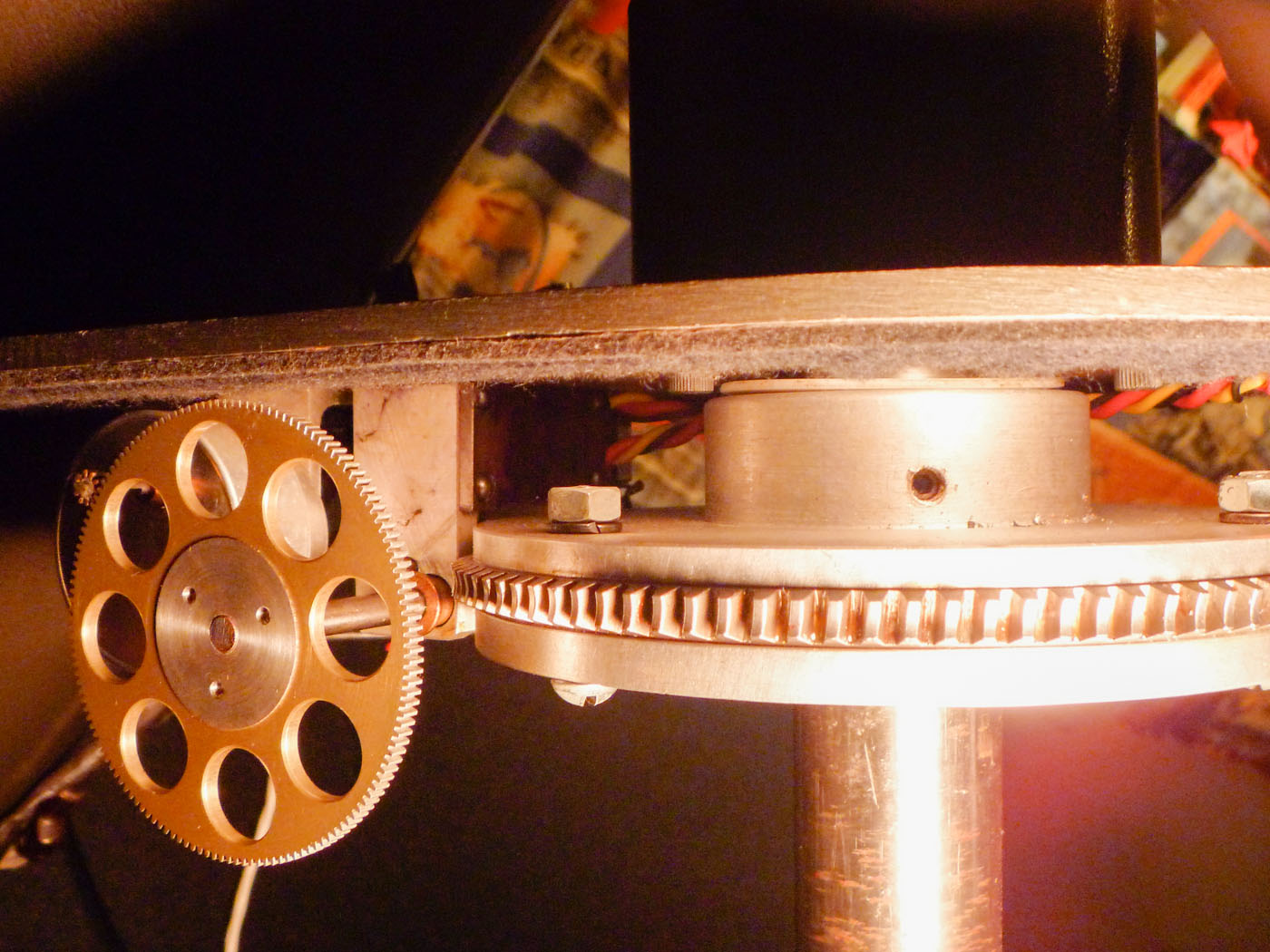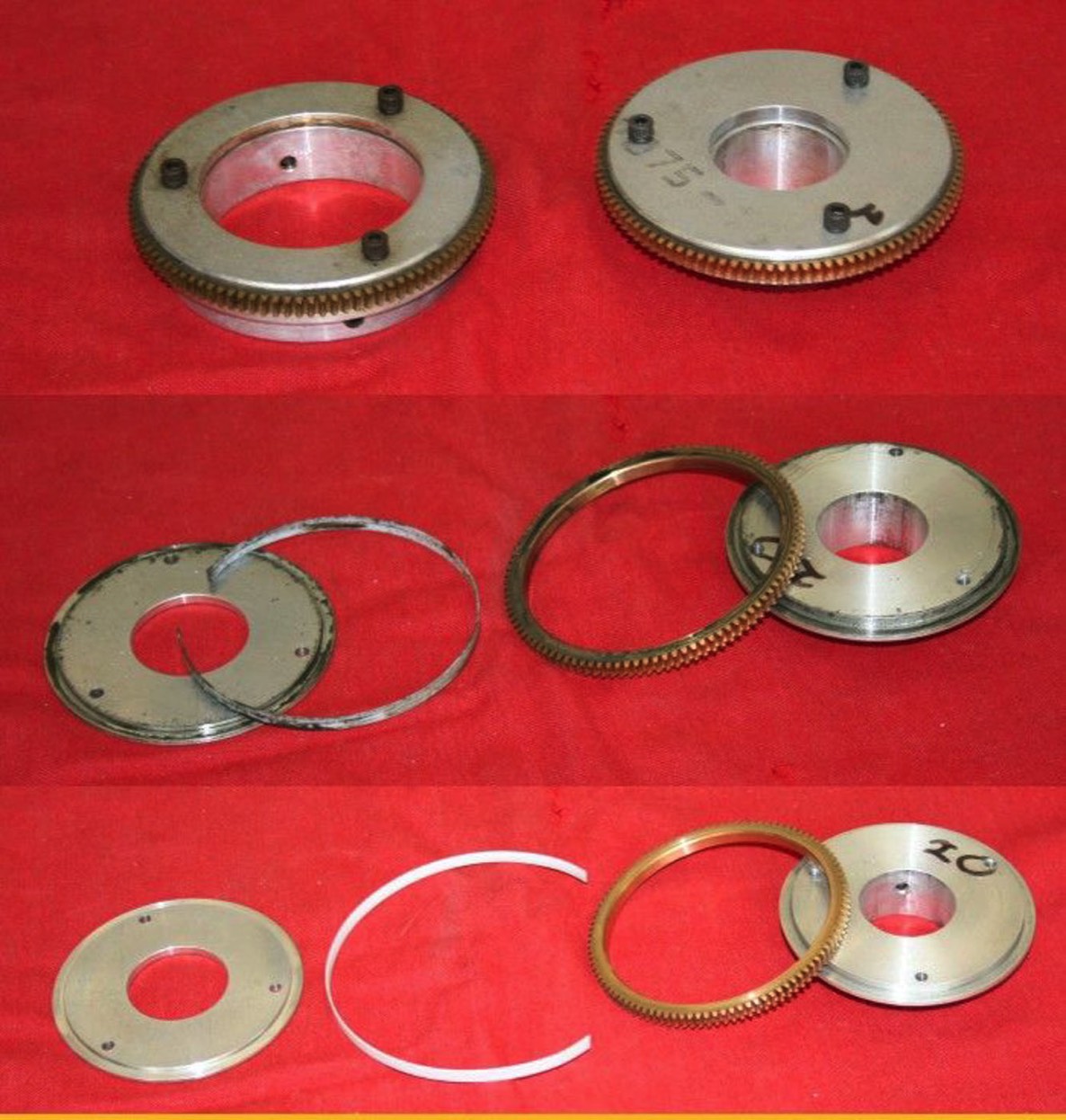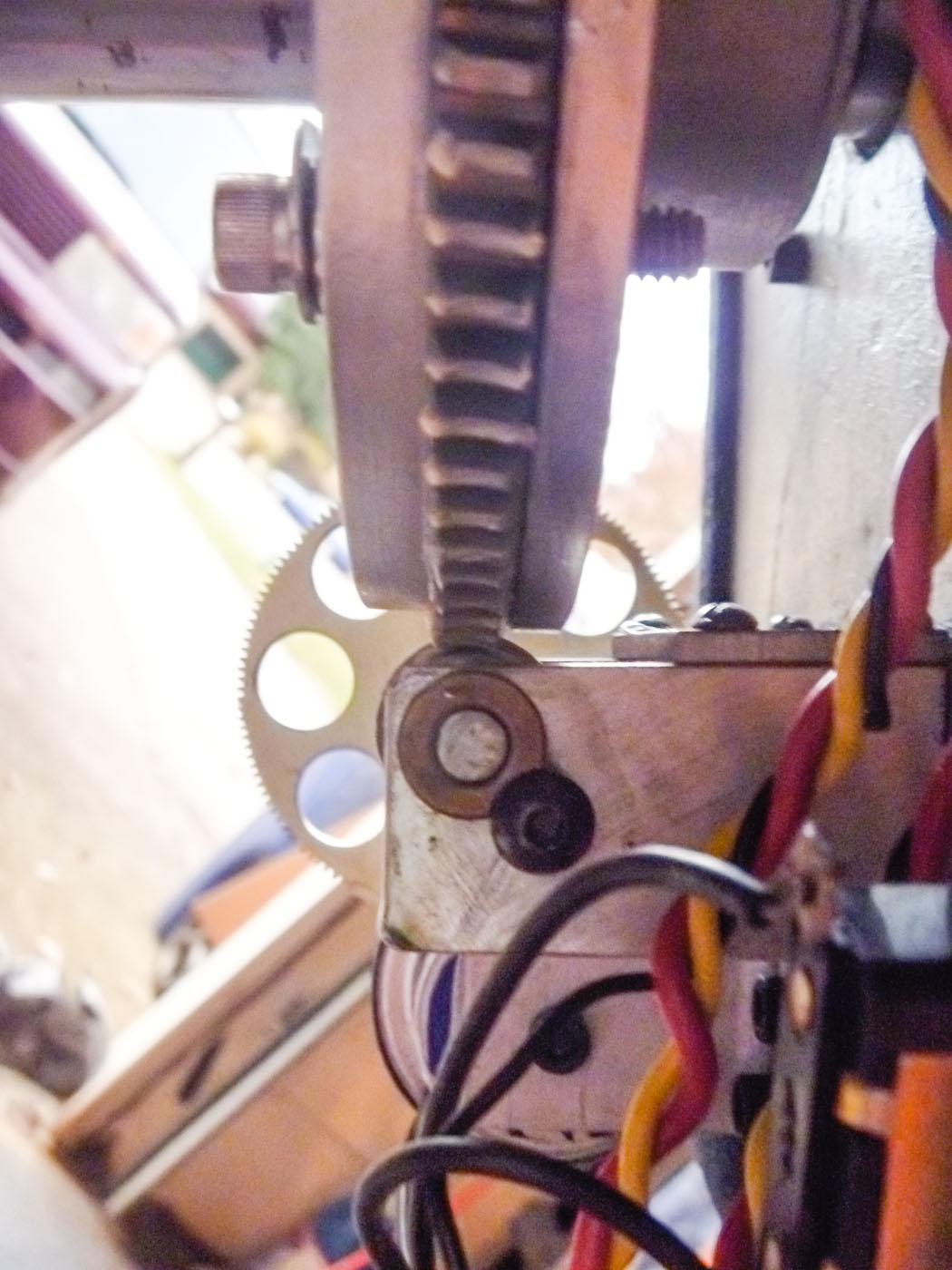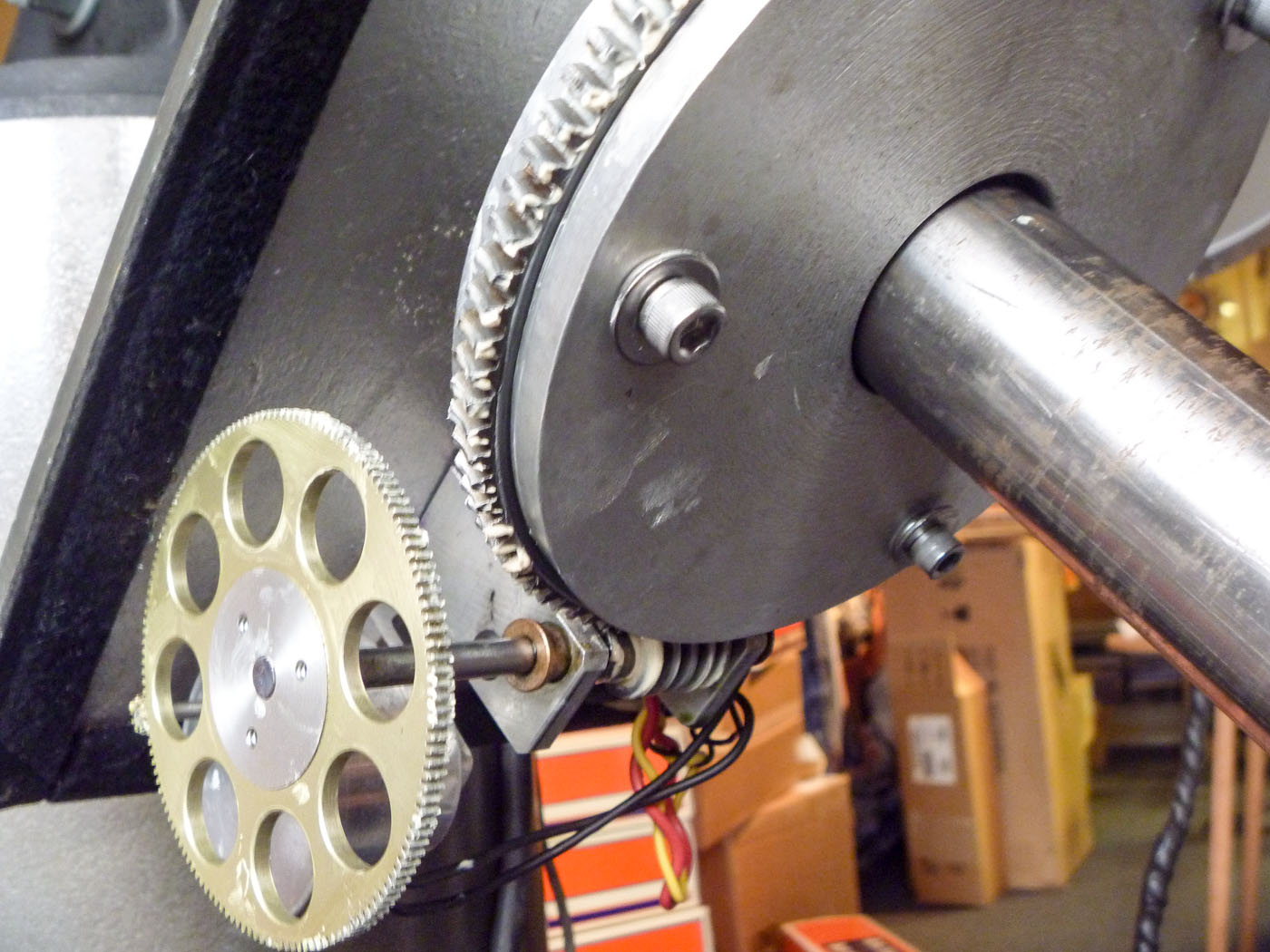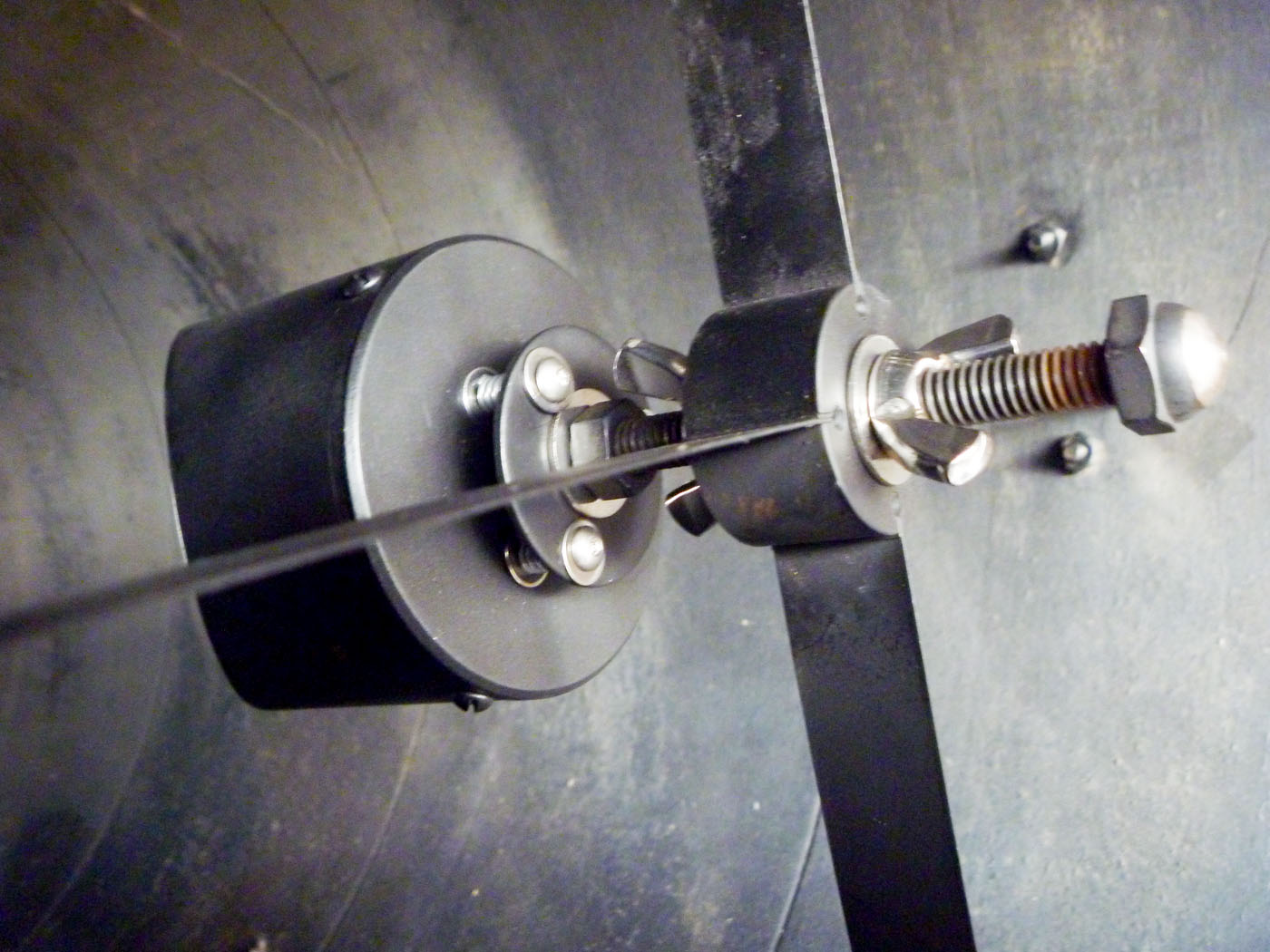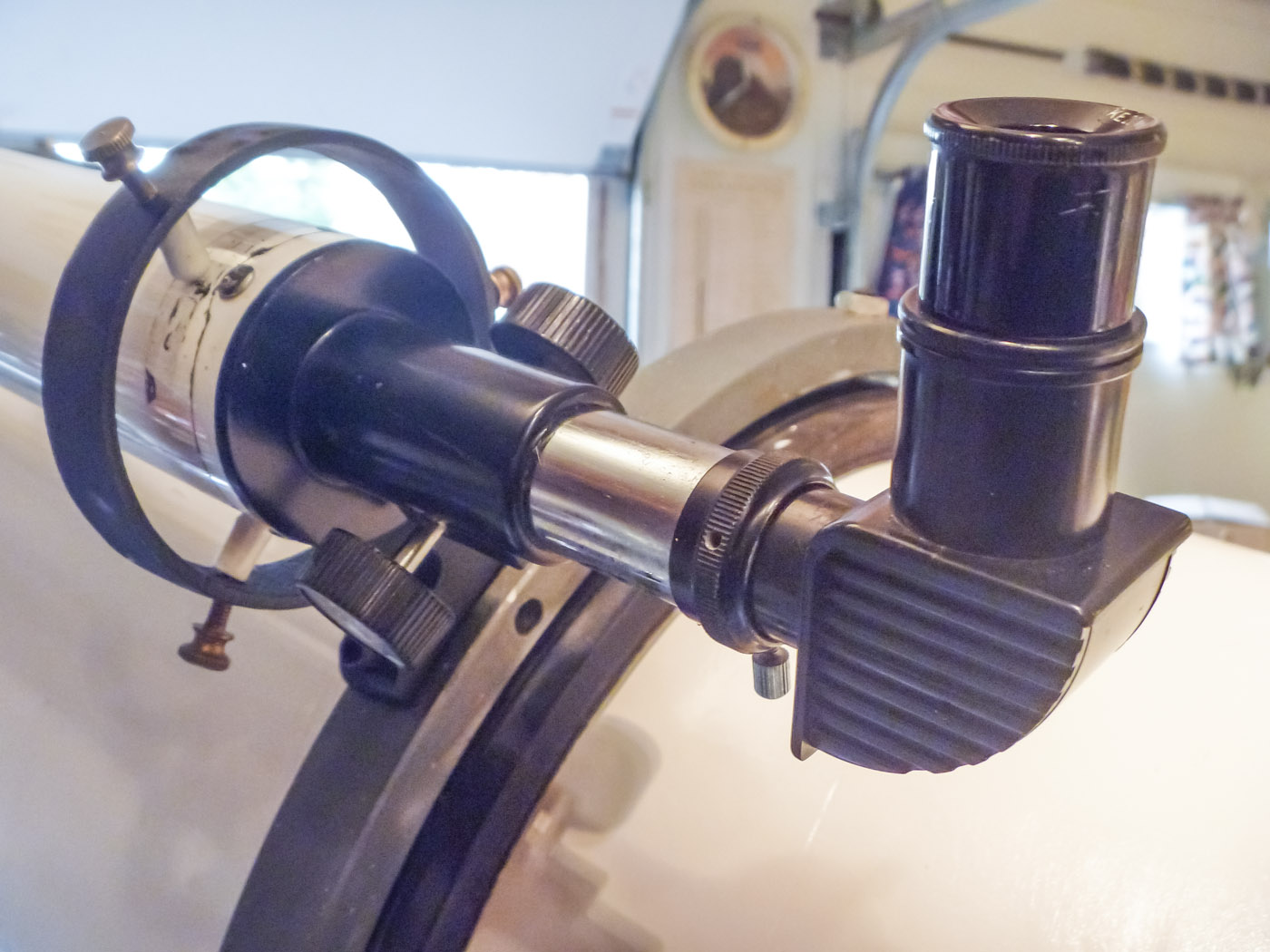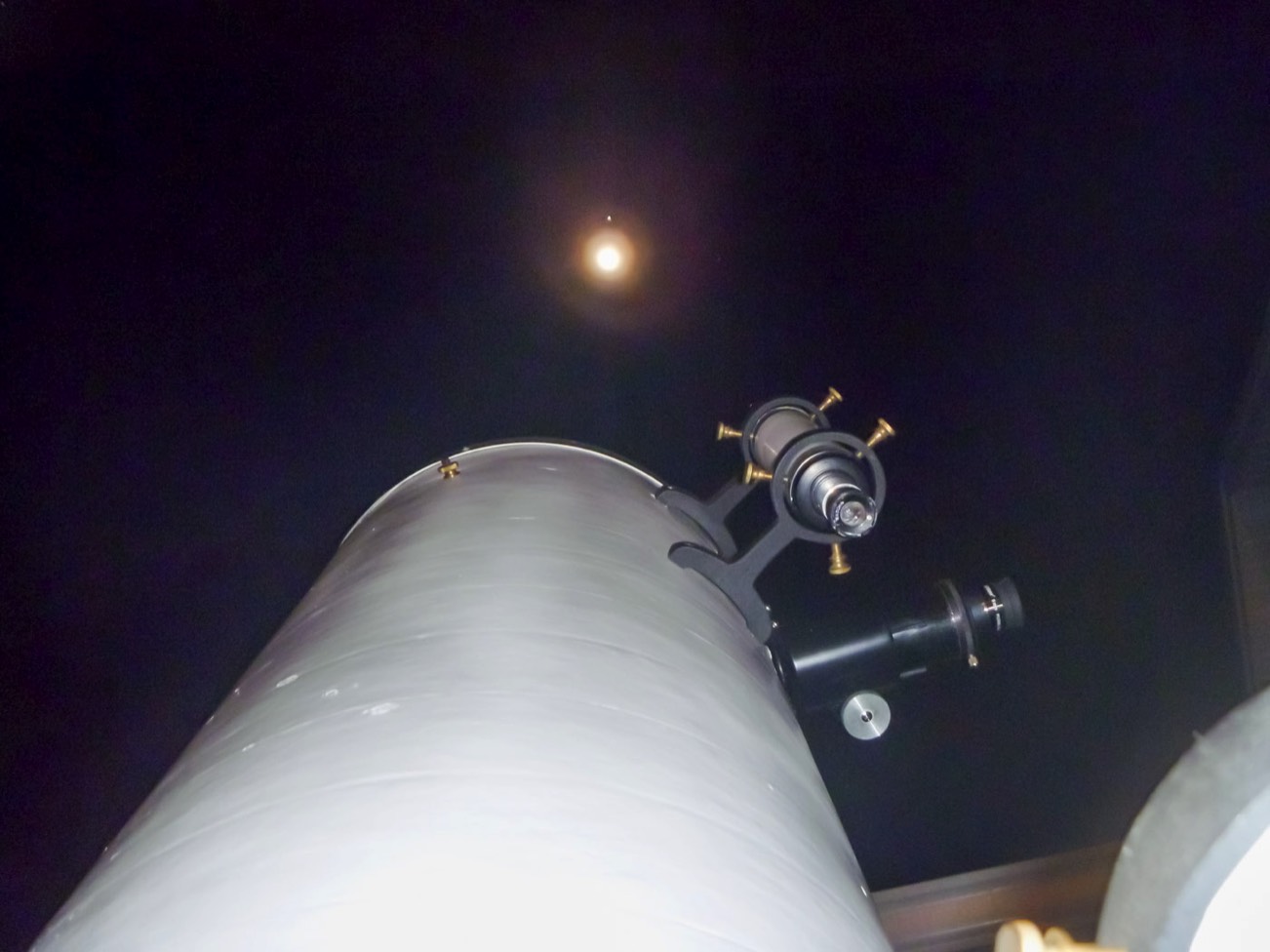Part Two - The Restoration
"1979 12.5 " F/6 Model D
Transportable
by John Higbee
Click on any image for larger size
First impressions: Cave #793839 was born in the twilight of the Cave Optical era. It sports a sturdy Sonotube, vice the beautiful Parks-provided fiberglass tubes of Cave’s heyday. The focuser is a serviceable rack-and-pinion, but with no helical focusing capability. The setting circles are black Bakelite, vice the brass Magnussons. The 60mm guide scope is a generic refractor with no maker’s identification, and no diagonal (more on that later). No eyepieces came with the Cave. With all that said, #793839 is still a genuine classic, and a definite “head turner”! The paint on the tube was in good shape, and the mount and pier were in great condition…both the declination and RA axes were bright with very little corrosion. The primary and secondary mirrors were in very good shape, with bright coatings.
SECTION 2.B: First order of business…I had to fix the Cave’s tendency to “freewheel” around the RA axis. Once I removed the drive casing, the cause was obvious…the drive motor worm gear was not engaging the RA axis ring gear. (Afterwards, I found out that this condition had existed for quite some time…as it was in one of the pictures provided with the 2010 Astromart ad!)
SECTION 2.C: Additionally, it became apparent that the clutch needed to be refurbished. Rather than the stock assembly using three Allen cap machine bolts fitting into machined threads in the upstream disc, my clutch was assembled with three undersized round-headed machine bolts secured with nuts! This problem, taken with the misaligned worm gear, and the lack of wear on any of the gears, may indicate that my Cave was delivered from the factory in that condition.
SECTION 2.D: With step-by-step help from Jon Miles, Tim53 and Dan (Datapanic), I disassembled the drive unit and removed the RA shaft drive gear/clutch disks assembly. I then removed the three undersized bolts, but the original brown grease on the assembly had turned into a sticky adhesive…I had to soak the assembly in warm water before I could get it apart.
SECTION 2.E: After thoroughly degreasing and cleaning the pieces (including the small Teflon strip that is the heart of the Cave clutch), I relubricated the assembly with white graphite and replaced the undersized hardware with three correctly-sized stainless steel Allen cap machine bolts and lock washers (it turned out that the threads in the upstream disks were in perfect shape…great news!)
SECTION 2.F: The re-assembly of the RA drive went well. The Bristol motor (dating to 1977) was op-checked and found to be in great condition. After some delicate alignment (and after completing a drive train re-lube with white graphite), my tests showed a nicely operating RA drive and a smooth-as-silk clutch function…first hurdle passed!
SECTION 2.G: Next, I decided to follow Dan’s lead and upgrade my stock Cave secondary mirror mount with what Dan calls the “Maynard Clark” modification (Maynard Clark was a famous amateur astronomer and amateur telescope maker (ATM) who produced an absolutely superb Newtonian reflector that Dan is in the process of restoring – this is Mr. Clark’s improvement on the stock Cave design). It’s easy to do and significantly improves the secondary’s ability to hold its alignment…highly recommend it! I did add a stainless steel lock washer under one of the wing nuts clamping the diagonal holder to the spider…I think it provides additional help in preserving collimation, particularly when the Cave has to be rolled in and out of my garage for use.
SECTION 2.H: The 60mm guide scope is mounted on the telescope mounting rings. It’s a generic refractor with no identifying marks on the tube or the objective cell. It came with a 24mm eyepiece, and no diagonal. I could not get it to focus…after consulting on Cloudy Nights, Bob Midiri suggested I try installing a diagonal. It now works great, and provides a second serviceable “large finder”, particularly when the Cave is pointed at objects close to the zenith.
SECTION 2.I: The rack and pinion focuser was in good shape, and operated smoothly. It’s labeled “Japan” and fits the description of the Meade-provided focusers used by Cave during the mid-to-late 1970’s. It has no fine focus (helical) feature, but I purchased an Orion 2”-to-1.25” adapter with a helical focus feature that serves well. (This is the second edition of the Orion adapter, with the finer helical thread).

